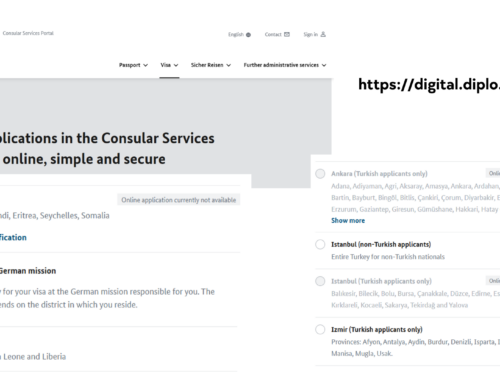Navigating Cross-Border Talent Mobility in the Digital Age.
In contemporary times, digitalization has heavily disrupted industries and sectors, including the talent acquisition and mobility market. Cross-border talent mobility has become a bedrock for organizations and governments to address employment gaps caused by demographic differences within a fast-paced, ever-evolving tech ecosystem that also creates new opportunities.
The digital age has transformed how businesses approach talent mobility, introducing new opportunities and challenges. Organizations and governments now compete intensively to attract top talent from around the world.

Germany and the Challenge of Bureaucracy
In a very bureaucratic old-school Germany, significant policy changes regarding visas and the adoption of technology have aimed to streamline skilled worker attraction. The German government recently introduced an online visa application portal for specific countries, with plans for gradual global integration.
Although digitalization in talent mobility is intended to simplify processes for organizations and skilled workers, navigating this landscape remains challenging for many.
The issue of navigating talent mobility in an era heavily reliant on technology arises in relation to changes associated with:
- Cross-Border Hiring: Hiring talent from other parts of the world has become increasingly common due to a globalized workforce and competitive talent markets. However, many companies face challenges in identifying the right candidates and navigating the complexities of different country profiles. Technological advancements have eased some of these difficulties, but successful implementation often requires partnerships with global or talent mobility experts.
- Visa procedures and compliance: recruiting skilled personnels from third-world countries and outside of the EU can be highly complex from a German perspective. Although online application portals have simplified the process, it remains heavily bureaucratic. Many applicants face rejections due to errors, such as applying for the wrong visa category.
- Cultural Integration: The digital age has made cultural integration more manageable through tools like Duolingo, HousingAnywhere, and ImmoScout, which help break the ice for newcomers. However, cultural integration comes with costs to be borne by the employer or employee and does not fully mitigate the challenges of adapting to a new culture.
- Cost and efficiency: the price of talent mobility can be cost-efficient or costly depending on the long-term loyalty of a talent. For many employers, it is a bitter feeling to spend thousands helping an employee integrate and lose them immediately.
- Data Security: Managing sensitive employee information across borders necessitates robust data protection measures to prevent breaches and comply with varying international data privacy regulations. Navigating data protection laws across regions and countries might be a bit complex for many organizations.

- Strategies for Effective Cross-Border Talent Mobility To navigate the complexities and changes of cross-border talent mobility in the digital age, organizations can adopt the following strategies:
- Leverage Technology: Implement advanced digital tools to streamline processes such as visa applications, tax compliance, and employee tracking. For instance, AI-driven platforms can simplify the intricacies of employee mobility and enhance the efficiency of cross-border work assignments.
- Develop Clear Policies: organizations and governments can establish comprehensive policies with less bureaucratic hurdles that address remote work, hybrid models, and cross-border assignments, ensuring clarity for all stakeholders. Countries like Portugal, Estonia, and Croatia have introduced “digital nomad” visas, allowing professionals to reside in one nation while working for employers in another. This flexibility enables companies to access a broader talent pool without necessitating relocation.
Ensure Compliance: Stay updated with international laws and regulations, possibly by partnering with global mobility experts, to manage compliance and mitigate risks. Foster a Culture of Flexibility: Encourage a flexible work culture that accommodates various working arrangements, making the organization more attractive to global talent.

In conclusion, the digital age has transformed cross-border talent mobility, bringing both exciting opportunities and unique challenges. By staying ahead of emerging trends and adopting thoughtful strategies, organizations can navigate this dynamic landscape with confidence, harnessing global talent to fuel innovation and drive meaningful growth.
Sources: Orience , Datatechvibe













